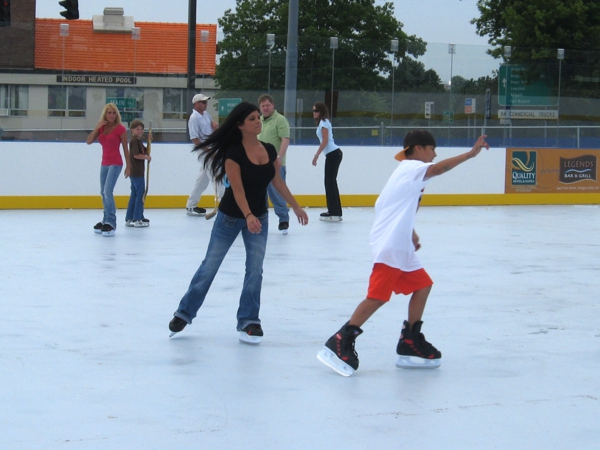Pets
Too Small For Ice Skating – What Are My Winter Options?

The Return of the Snow
After years of getting little snow in the UK, recently we have seen a return of the (for some at least) dreaded white stuff. Because we had become so used to mild and rainy winters, the country seems to grind to a halt with the first snowflakes. Councils are always unprepared; car manufacturers tend to focus less of designing them for the prolonged periods of intense cold and many man hours are lost because people struggle to get to work. When it hits in January people grumble that we didn’t get any over Christmas “The children would have had the time to enjoy it then” or “I had two weeks off and we get it NOW?!”

The Gardener Strikes Back
Snow can make even the most harsh and desolate of landscapes look picturesque. When it comes, you can’t help but go out into your garden and take hundreds of pictures to share with your friends via email or on social networks. Trees, the house, a fence, the occasional robin, your favourite shrub are all subject to a camera that probably hasn’t been used since your summer holiday and then you remember your pond. Its surface is frozen and there are fish inside it. You check the pump is still working; good, they are getting air but you want to melt it without harming the prize koi carp or the pond itself.
Except in the most extreme circumstances your prize fish are likely to be fine. If the pump is working and the pond hasn’t frozen solid (unlikely in the UK) and assuming that the pond is deep enough that this will not happen, then your fish can still breathe easily. However, that doesn’t mean that you can’t or shouldn’t try to make life a little bit easier for your fish. There are a few handy tips you can follow to melt the ice cover.
Touching the Void
You might want to do everything you can to help your fish but do not, under any circumstances, attempt to smash through the ice. This could cause great stress to your fish and the shockwave might upset the balance of water below. Use an old fashioned hob kettle; bring it to the boil and place it on top of the ice. The surface should melt beneath the radiated heat. Remember though that ice is an insulator; when a layer gets thick enough, it prevents the temperature from dropping further so if the air temperature gets colder, the water in your pond is likely to remain stable. There are also a number of gadgets you can purchase to prevent them icing up too much but these are probably not necessary.
The Day after Tomorrow
Later on in the year, you might consider taking another look at the specifications of your pond and ascertain whether it is deep enough for another season of snow and extremely cold temperatures. It may not have frozen completely but the solid surface will have reduced the amount of space in the pond that your fish had. Depending on how many fish you have and the size of your pond, this might have made life uncomfortable for them. If you did experience problems in the snowy conditions or you lost some fish and you do decide to deepen your pond to prevent it happening again, you will probably need to replace your pond liner. Ensure adequate depth for the type and quantity of fish. If you want to increase the numbers in your pond you will almost certainly need to increase its size. Use a simple calculator to work out how much liner you are going to need.
Sally Dimmock enjoys a snowy garden and would love to have a pond. She recommends that if you too desire a pond then you will need to use a pond liner size calculator to work out what will best fit in your garden.
-

 Tech11 years ago
Tech11 years agoCreating An e-Commerce Website
-

 Tech11 years ago
Tech11 years agoDesign Template Guidelines For Mobile Apps
-

 Business6 years ago
Business6 years agoWhat Is AdsSupply? A Comprehensive Review
-

 Business10 years ago
Business10 years agoThe Key Types Of Brochure Printing Services
-

 Tech8 years ago
Tech8 years agoWhen To Send Your Bulk Messages?
-

 Tech5 years ago
Tech5 years ago5 Link Building Strategies You Can Apply For Local SEO
-

 Law5 years ago
Law5 years agoHow Can A Divorce Lawyer Help You Get Through Divorce?
-

 Home Improvement6 years ago
Home Improvement6 years agoHоw tо Kеер Antѕ Out оf Yоur Kitсhеn































